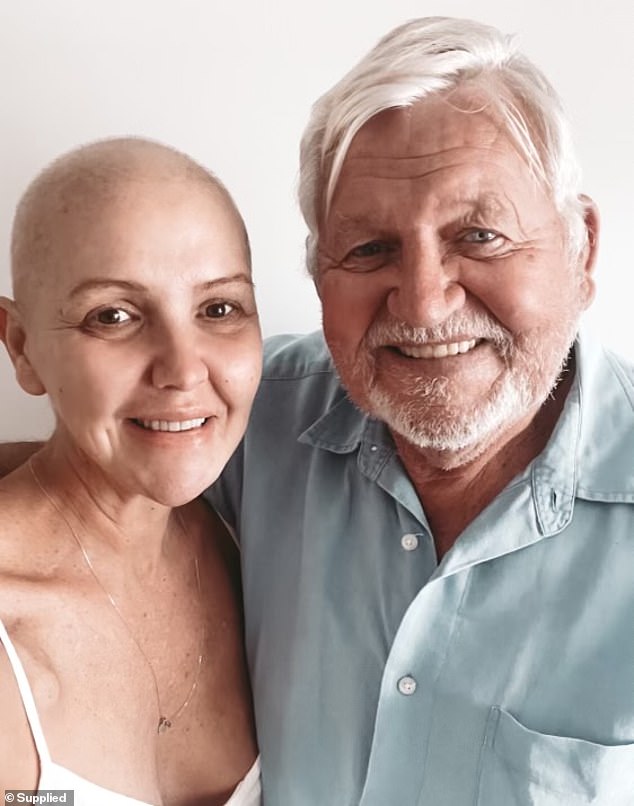A Queensland mother endured her grueling chemotherapy treatments through dance parties with her beloved father after a shocking breast cancer diagnosis at age 38.
Shanon Nealon, 42, from Brisbane, was diagnosed five months after she found a hard but “not sinister” lump in her chest and was adorably entertained with her father Joseph, 80, by her side at every session.
Their funny videos provided a welcome respite from grueling treatments, and the duo formed a small online fandom that was inspired by their magnetic optimism.
However, just as Shanon was finishing her five-month chemotherapy period, Joseph suffered a massive heart attack. He believes he was “heartbroken” watching his daughter suffer from cancer.
Two years after her diagnosis, Shanon, an Indigenous nurse, told FEMAIL she is in remission and is helping other First Nations people with cancer fight the disease. Fortunately, Joseph recovered from his heart attack after surgery.
Brisbane mother Shanon Nealon (left) battled aggressive breast cancer with the unwavering support of her 80-year-old father Joseph (right).
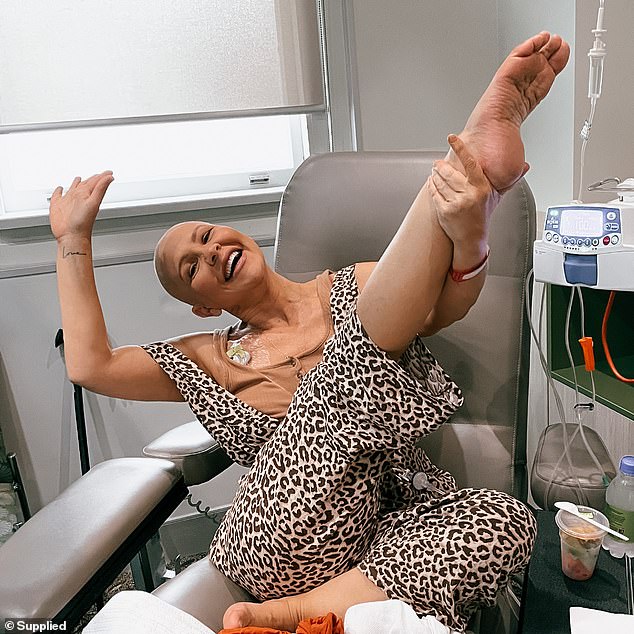
Shanon found a lump in her breast, but because she was a busy working mother and because her GP wasn’t worried it was anything sinister, she didn’t get it checked for five months.
One day in late 2020, while lying in bed, Shanon felt a small, hard, painless lump on the side of her left breast, near her armpit.
Erring on the side of caution, Shanon went to see her GP, who didn’t suspect the lump to be cancer, but referred her for an ultrasound.
“She said, ‘It’s Christmas, it’s going to be hard to get in anyway, but don’t worry, it’s not urgent, it’s probably nothing too sinister,'” he recalled.
“As a nurse, I Googled what breast cancer lumps felt like and it didn’t look like what was described, which is why I left it for so long.”
Being a busy working mother and assured by her doctor that the lump might not be anything suspicious, it wasn’t until five months later that Shanon went to the specialist to investigate.
What was going to be a preventative scan turned into an eight-hour stay at the clinic, which set off alarm bells in Shanon’s head.
‘After the ultrasound, they did a mammogram which was not requested in the referral and they called the radiologist to do a biopsy. I knew immediately that it was cancer,” he said.
Her fears were confirmed when she was given the news that she had stage three ER-positive, PR-positive, and HER2-positive breast cancer, also known as triple-positive breast cancer, in June 2021.
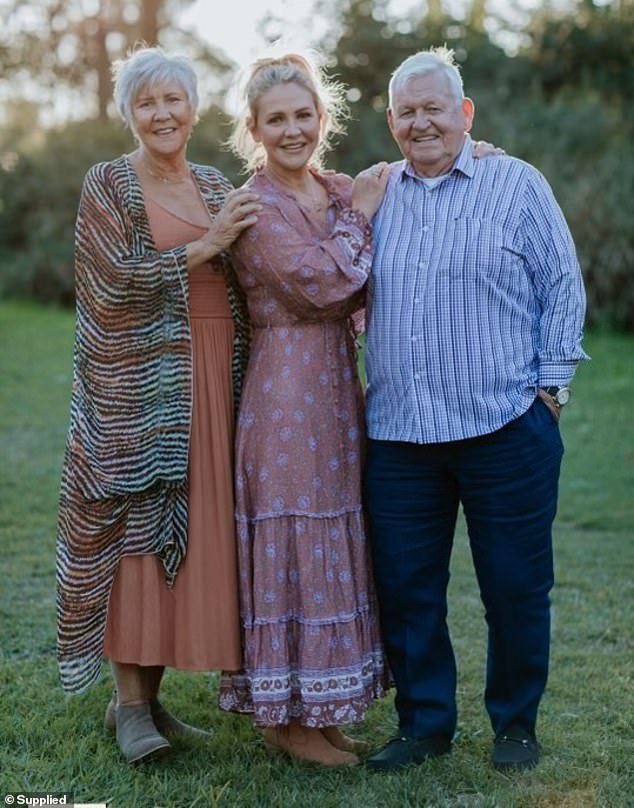
She found out she had triple-positive breast cancer in June 2021, the same disease her mother, Joy (left), had been diagnosed with just two years earlier.
It was the same disease her mother, Joy, had been diagnosed with just two years earlier, but her cancer had progressed even further.
“I thought it must be like what happened to my mother, she just had a lumpectomy, six weeks of radiation and hormone blockers, that must be all I need,” she said.
Shanon spent the entire night researching triple positive breast cancer to find out what was in store for her.
“I always hated surprises, I was always the one who found out about birthday and Christmas presents, so by doing that I felt a little more prepared and not so naive,” she said.
‘I already knew from my research what my treatment was going to be. At that time, my biggest worry was whether my hair was going to fall out.”
Telling her father, Joseph, about the diagnosis was heartbreaking, as he did not take the “devastating” news well.
“The first months after hearing the news I didn’t sleep, at night I lay in bed crying at the possibility of losing her,” he said.
Four weeks later, when Shanon began chemotherapy at Mater Hospital Brisbane and Mater Cancer Care Centre, Joseph was her unwavering support and pledged to be by her side every step of the way.
To pass the time during the sessions, which could last up to eight hours, Shanon and Joseph began making fun videos of themselves dancing.
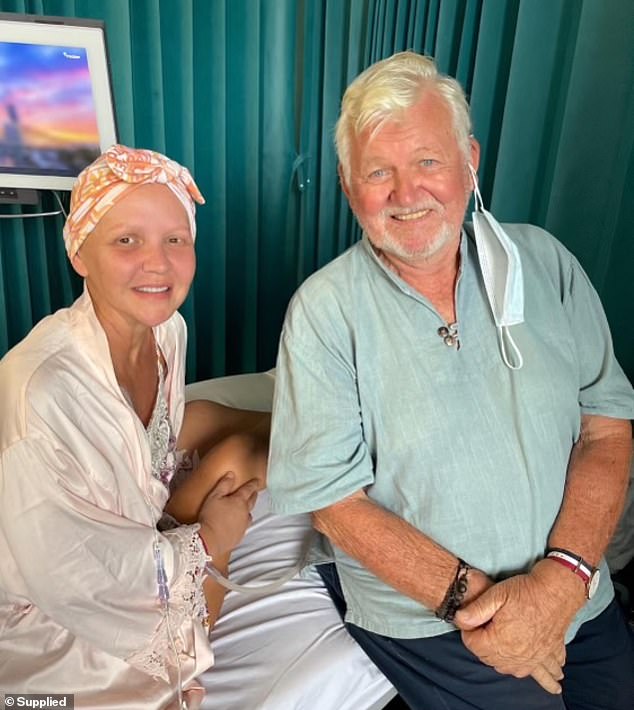
To pass the time during chemotherapy sessions, which could last up to eight hours, Shanon and Joseph began making fun videos of themselves dancing.
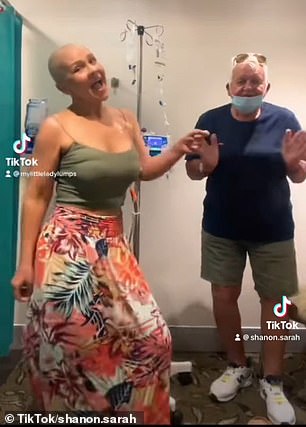
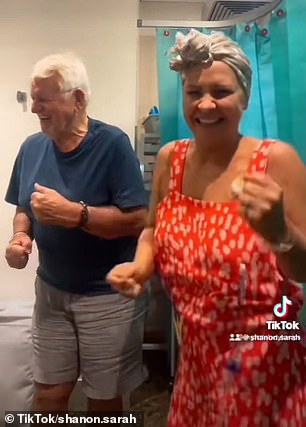
The dances became a routine for the duo and an entertaining distraction when Shanon felt exhausted from chemotherapy.
“At first, it was just for my Facebook and Instagram, maybe to reassure my family and friends that I was doing well,” she said.
“I found it difficult trying to support myself through treatment, but also the need to reassure my children, family and friends that everything was going to be okay, when in reality I didn’t know if it was going to be okay.”
The dances became a routine for the duo and an entertaining distraction when Shanon felt exhausted from chemotherapy.
‘Some days I was in the chair, without energy, it hurts, it hurts, I don’t feel good and dad asks me: “Are we going to dance today?” and I said, “No, I don’t feel like it,” she said.
“Then I would feel guilty because I thought he was going to be worried, so I would get up and do it, but then I would feel better.”
However, just weeks before Shanon finished chemotherapy, Joseph suffered a life-threatening heart attack and had to undergo open heart surgery.
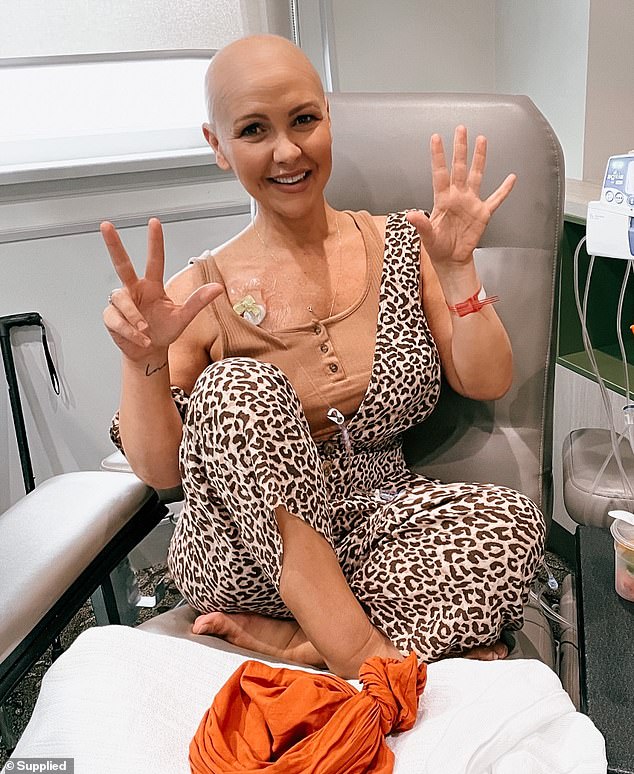
Chemotherapy did not shrink Shanon’s cancer; However, after a partial mastectomy to remove the lump and a brief period of radiation, she is now in remission.
“I still believe to this day that the heart attack was due to a broken heart watching Shanon fight this disease,” Joseph said.
“From the day she was diagnosed until today, I say a prayer for her every night.”
Shanon said Joseph was “hit with a little bit of confusion” for a while after his surgery, but eventually recovered quickly and was back at her side for his final chemotherapy appointment.
Chemotherapy did not shrink Shanon’s cancer; However, after a partial mastectomy to remove the lump and a brief period of radiation, she is now in remission.
Joseph said her “prayers were answered” when she found out her daughter had beaten the disease and she “treasures” the “special” memories they created dancing together during chemotherapy.
However, Shanon doesn’t feel out of the woods because she knows her cancer has a high recurrence rate.
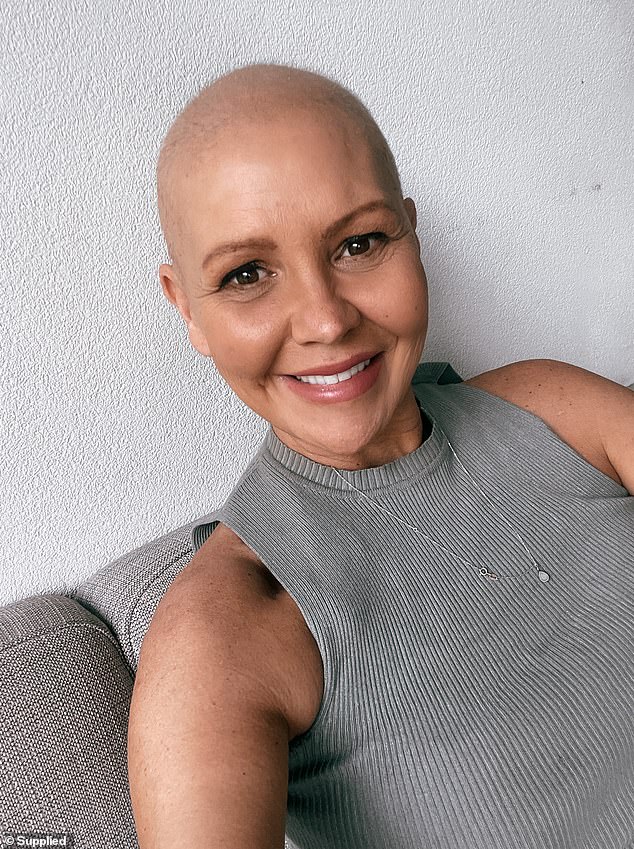
However, Shanon doesn’t feel out of the woods because she knows her cancer has a high recurrence rate.
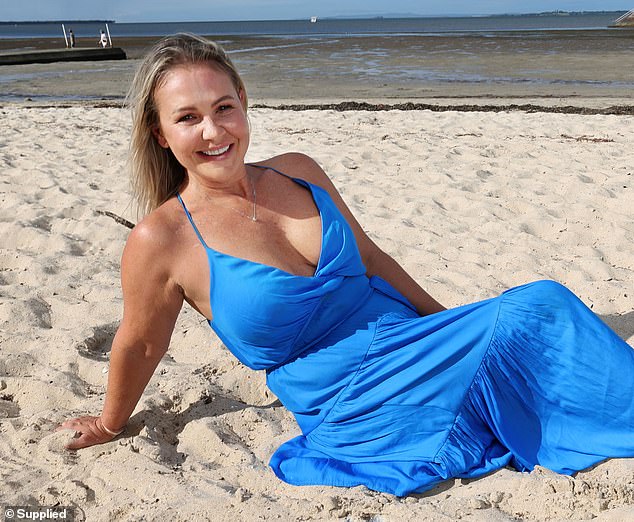
Shanon urges women not to delay if they find a lump, even if they or their doctor think it might be “nothing,” and to have regular breast checks, which are free for women over 40.
‘I see my oncologist every six months and my breast surgeon every 12 months. “I had a follow-up with the breast surgeon two weeks ago and next Tuesday I have to do a biopsy of a lump in my breast,” she said.
“It’s just going through all that trauma again, although I think now that I’ve gone through it I’m less anxious.” “I move on, there’s nothing you can do, it will be what it will be.”
Shanon is using her experience to help support Indigenous people living with cancer by working with researchers at the University of Queensland as a First Nations Cancer Clinical Nurse Consultant at Princess Alexandra Hospital.
She is helping Indigenous patients access appropriate treatment, especially those living remotely, and feel supported during their cancer journey.
“In Queensland, Aboriginal and Torres Strait Islander people are almost twice as likely to die after being diagnosed with cancer and have significantly lower five-year survival than other Queenslanders,” he said.
“I know what it feels like to undergo cancer treatment as a patient, as a nurse and as a First Nations person.”
It also urges Australian women not to delay if they find a lump, even if they or their doctor think it might be “nothing”, and to have regular breast checks, which are free for women over 40.


